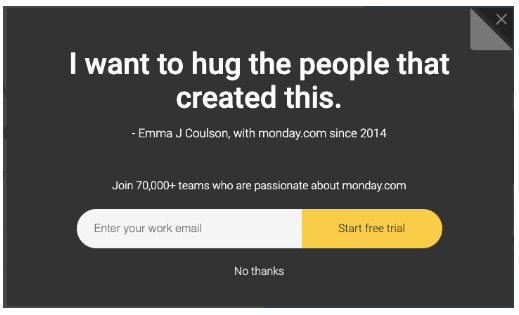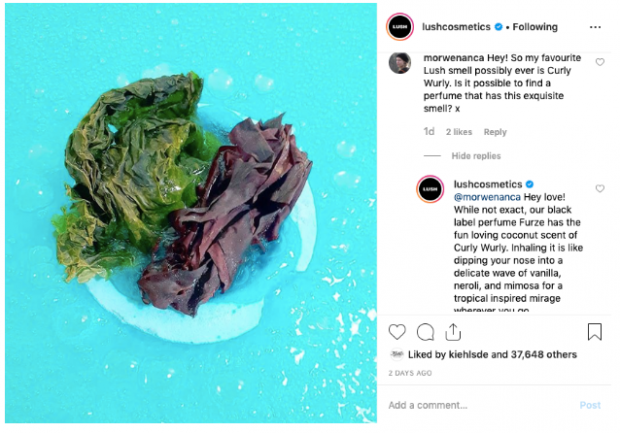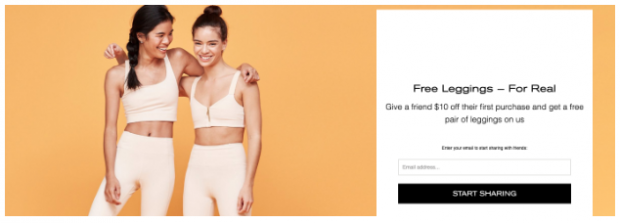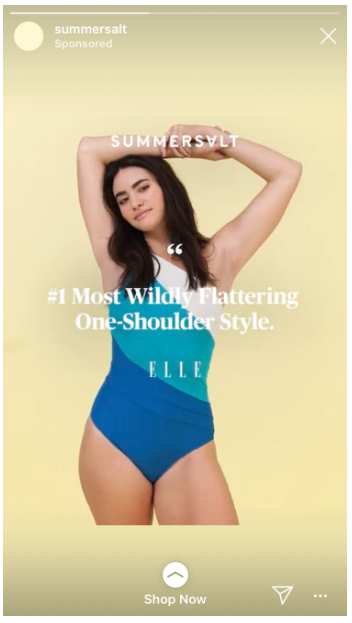What is Social Proof and How to Use it In Your Marketing Strategy
What is social proof?
To put it simply, it means relying on the wisdom of others when making a decision.
Social proof is why you read product reviews before buying, and ask locals for restaurant recommendations when you’re visiting a new city.
Whether you’re buying a new mattress or choosing a hotel for your upcoming vacation, It’s easy to get overwhelmed. How do you decide between 100 different options that are supposedly “the best”?
Whether you realize it or not, you’re probably relying on social proof to make your final decision.
Relying on social proof is universal behavior. 92% of 18- to 34-year-olds get input from friends and family before making a purchase. And as a marketer, it’s one of your most important tools.
Bonus: Get the step-by-step social media strategy guide with pro tips on how to grow your social media presence.
10 social proof examples and how to use them in marketing
Social proof takes many forms, and lucky for you there are tons of ways to incorporate it into your marketing strategies. Below, we’ll walk through some of the most valuable forms of social proof marketing and how they can work for you.
1. Online reviews
The last time I bought something without reading a review first, it was a cup of lemonade from a roadside stand. That gamble paid off (refreshing and delicious, and only 50 cents!), but otherwise I always check reviews before buying.
I’m not alone: 91% of people trust online reviews as much as personal recommendations.
When deciding whether to buy your product, visit your restaurant, or stay at your AirBNB, customers are going to look at reviews first. So make sure you are prominently featuring a few positive ones.
Here are some ways to get positive reviews from customers:
- Ask for them. You should follow every purchase with a request for a rating or review. Make it as simple and low-barrier as possible. That means short feedback forms, one-click ratings, and easy sign-ins.
- Add an incentive. For example, include a discount code for future purchases to customers who leave reviews. This not only encourages reviews—it also drives future sales!
- Provide reminders. Are you in an industry dominated by a third-party review site (like TripAdvisor for travel, or Yelp for food and beverage)? Be direct! Ask your customers to share their feedback on these platforms. Consider providing a discount or perk in exchange for a review.
- Address negative feedback. Even the most-loved brands get a one-star rating now and then. Often, good customer service can help to repair this damage: reply to the concern, be kind, and offer a solution (like a return or exchange). This shows potential customers that you’re trustworthy, and encourages them to take a chance on you.
Review sites are goldmines for glowing tidbits about your brand, so make sure to compile some of the best feedback! Then incorporate it into your own social posts, email marketing, and product copy.
2. Influencer endorsements
As we all learned from Mean Girls, if the right person wears army pants and flip flops, then everyone wants army pants and flip flops. That’s the power of an influencer!
In fact, over half of women have made a purchase based on an influencer. They can introduce your brand to new audiences and strengthen your reputation.
View this post on InstagramA post shared by JEREMY MOORE (@makingitmoore) on May 3, 2019 at 10:48am PDT
You may choose to partner on social media posts, blog posts, or videos. You could also go deeper with a takeover.
When deciding on the format and scope of your partnership, keep your target audience in mind. If you’re trying to reach older adults, a Snapchat influencer probably isn’t the best bet. Likewise, you probably won’t catch Gen Z teens on a parenting blog, no matter how popular it is.
View this post on InstagramA post shared by Gabrielle Blair (@designmom) on Jun 7, 2019 at 1:04pm PDT
The key to successful influencer marketing is finding the perfect fit. You want to work with someone whose voice and values align with yours.
Learn more about finding the right social media influencer.
3. Third party how-to videos
If a picture is worth a thousand words, then a video can tell a whole story about your brand.
Like traditional commercials, videos can provide more depth and information than a single Facebook post or tweet. But while most of us tune out commercials immediately, 87% of Millennials are happy to watch videos that feature product demos or sponsored content.
In fact, 6 in 10 YouTube subscribers would follow advice on what to buy from their favorite content creator.
Third party videos are especially valuable for demoing products in action. For example, Dyson partnered with beauty influencer Lauren Curtis to review and demo their Supersonic hair dryer:
Other beauty brands regularly work with influencers to showcase tutorials. Loreal partners with Jill Lansky of The August Diaries to share looks on Instagram:
View this post on InstagramA post shared by Jill Lansky, Beauty + Style (@theaugustdiaries) on Jun 15, 2019 at 2:23pm PDT
Meal kit services like HelloFresh also work with video content creators to show off the convenience and value of their products:
For sponsored video content, ensure you and the creator are clear on deliverables and requirements. If there are key features or benefits that you want them to mention, have those included in a contract.
A word of caution: don’t get too prescriptive!
These videos should feel candid and authentic, which means giving creators free rein to share their honest thoughts. Viewers will be able to tell if they’re hearing parroted talking points instead of a real review.
For more tips, check out our guide to YouTube marketing!
4. Testimonials
Want to gain your audience’s trust? Prove to them that your product or service delivers on its promises.
A tried-and-true method for showing that your brand has integrity is sharing customer testimonials. These are especially valuable for services or programs, where you can’t rely on compelling product descriptions or images.
Like reviews, discussed above, testimonials provide real feedback on customer experiences. However, while any customer can leave a review, testimonials are curated and selected by a business.
Frequently, reviewers post on third-party sites (like Yelp, Google, or Facebook). With testimonials, your brand can choose how and where your customers’ comments are shared.
Kayla Itsines has built a fitness empire with her Bikini Body Guide (or #BBG) program. Her customer testimonials (including before and after shots) prove the value of her workout routines to an audience of 11+ million people.
View this post on InstagramA post shared by KAYLA ITSINES (@kayla_itsines) on Jun 19, 2019 at 4:28am PDT
Monday.com is another company that makes extensive use of customer testimonials. In fact, they have a dedicated section for customer stories on their website. But they also pull excerpts into marketing messages, like their newsletter sign-up form:

This example shows that even a short snippet can have a big impact when used strategically. In addition to showcasing detailed testimonials on your website or brand materials, use brief but high-impact sentiments in your marketing messages.
PS: Notice how Monday also mentions their customer count (70,000+ teams) in this pop-up? That’s another piece of social proof you should incorporate into your messaging.
5. Social media engagement
One of the simplest examples of social proof is our tendency to follow the crowd. If a lot of people like something, we tend to like it too.
That doesn’t mean you need millions of followers to prove your value.
Having a big audience on social media is a good indicator of popularity, but smaller crowds can be powerful too if they’re highly engaged. Having lots of likes, comments, and shares on your social posts shows the personal side of your brand, and helps to build trust.
That’s because 2019 audiences are wise to the fact that large audiences can be bought, but you can’t fake relationships with your followers.
LUSH is one brand that’s great at conversing on social. It not only increases their engagement, but also allows them to share more product information and recommendations.

There’s no shortcut to engaging on social media. You need to make the effort to listen and respond thoughtfully.
But the payoff is big, as it builds loyalty and strengthens your brand reputation among your followers. And as Instagram experiments with hiding the number of likes on posts, this kind of visible engagement is more important than ever.
If you’re looking to boost your brand’s engagement on social, consider running an awareness campaign. A focused effort for a limited period of time can help increase your visibility and build your audience.
Bonus: Get the step-by-step social media strategy guide with pro tips on how to grow your social media presence.
Get the free guide right now!6. Brand mentions
Beyond your own channels, another invaluable form of social proof are positive social mentions about your brand on other accounts. Social listening means tuning in to discussions about your company (and your competitors) that take place online, and using that information to guide your marketing strategy.
In addition to collecting these insights, you should be responding to them and amplifying them on your own channels. Think of them as mini-testimonials.
Glossier is great at incorporating these mentions into product launches and campaigns:
View this post on InstagramA post shared by Glossier (@glossier) on May 24, 2019 at 10:27am PDT
View this post on InstagramTomorrow—eye cream gets Glossier ????
A post shared by Glossier (@glossier) on Apr 28, 2019 at 1:59pm PDT
Likewise, Monday.com amplifies positive social media mentions across their own channels:
View this post on InstagramCreate boards to manage anything, really! Start today – link in bio :)
A post shared by monday.com (@mondaydotcom) on May 8, 2018 at 6:09am PDT
Want to get started with social listening? Hootsuite Insights can help you keep track of social sentiments, mentions and more.
7. User-generated content
Similar to brand mentions, user-generated content features your brand or product on social media. These may be unsponsored posts by influencers or well-known figures, or they may just be great posts by regular customers and followers.
Amplifying these posts is an awesome way to recognize your customers, and take advantage of stellar images or videos. If you have well-known customers, that’s even better.
For example, Aritzia regularly reposts photos of celebrities wearing their clothing:
View this post on InstagramA post shared by Aritzia (@aritzia) on Jun 5, 2019 at 5:08pm PDT
Make it easy to collect user-generated content by creating a branded hashtag. For example, fans of luggage company Away use #travelaway in their posts:
View this post on InstagramGreece is the word. ???? @hey_ciara #travelaway
A post shared by Away (@away) on Jun 25, 2019 at 6:31am PDT
Likewise, Madewell encourages their fans to use #everydaymadewell for a chance to be featured on their channels:
View this post on InstagramA post shared by Madewell (@madewell) on Jun 15, 2019 at 7:41am PDT
Want more details? Here’s a primer on using user-generated content in your own social media.
8. Referral marketing
Referral marketing relies on current customers to refer new customers directly. It’s one of the most valuable forms of social proof, because people trust a recommendation even more if it comes from someone they know.
Referral marketing programs generally provide a perk or incentive to customers, which spurs them to reach out to friends and family. For instance, Girlfriend Collective athletic wear offers free leggings in exchange for referrals:

Likewise, newsletter community Girls’ Night In offers rewards and recognition to members who get their friends signed up. Referrals drive 60% of their growth, and have helped them reach more than 150,000 subscribers.
You can also combine influencer marketing with a referral program, by creating unique codes for individual brand partners:
View this post on InstagramA post shared by Andrea Hartman (@andrea_hartman_) on Jun 25, 2019 at 11:44am PDT
9. Media mentions
We know you love social as much as we do, but don’t forget about traditional media! News sites and magazines are still trusted sources for many audiences, as well as a key channel for introducing them to your brand.
Like testimonials and user reviews, media mentions provide a trusted third-party endorsement of your brand. Major media outlets will have the most impact here, but if you’re a niche brand you may find smaller, industry-specific publications equally valuable.
There are a few ways to incorporate media mentions into your marketing strategy.
Allbirds footwear has a roundup of notable media mentions on their homepage, for example:

And Summersalt swimwear uses these social proof examples in their Instagram Story ads:

10. Exclusivity
Many of these social proof examples focus on being as available and present as possible to customers—well-represented on review sites and influencer accounts, for instance.
But there’s another way to pique your customers’ interest and get them excited about your brand: exclusivity.
FOMO (the fear of missing out) is real and motivating.
That’s why Doug and Steve Butabi wanted to spend a night at the Roxbury so badly. That’s why we jump on flash sales and limited-time offers, and pre-order from our favorite brands in order to get our hands on something early. It’s the science behind why Kylie Jenner’s skincare line sold out in four minutes.
When a resource is scarce, our caveman brains tell us to act fast.
For small brands, this can be an especially smart strategy. You may not have the resources to produce massive runs of each product, or ship on demand. Reframing this limited availability as a feature of your brand can add to your cachet.
Everlane is a pro at this, by offering waitlists for upcoming products on their Coming Soon page. You can curate a similar page, or encourage customers to subscribe to your newsletter to find out when new products or services are dropping.
Bigger brands like Warby Parker also leverage exclusivity through limited-edition collaborations with well-known brands or celebrities.
View this post on InstagramA post shared by Warby Parker (@warbyparker) on May 22, 2019 at 9:18am PDT
You can also tap into FOMO on social media. Realisation Par uses social media to announce restocks of their Instagram-famous skirt, regularly leading to flurries of excitement from die-hard fans:
View this post on InstagramA post shared by Réalisation Par (@realisationpar) on Jul 26, 2018 at 3:58pm PDT
Having one of your products sell out (and then advertising the fact that it is sold out) is social proof because it shows that other people bought and enjoyed it, turning it into a highly sought-after item.
Now that you have a ton of ideas for how social proof can benefit your brand, it’s time to start incorporating them into your marketing strategy. You’ll be harnessing the power of the crowd in no time!
Do social media better, faster, and smarter with Hootsuite. From a single dashboard you can schedule and publish posts, monitor relevant conversations, engage the audience, run ads, measure results, and much more. Try it free today.
The post What is Social Proof and How to Use it In Your Marketing Strategy appeared first on Hootsuite Social Media Management.
Categories
- 60% of the time… (1)
- A/B Testing (2)
- Ad placements (3)
- adops (4)
- adops vs sales (5)
- AdParlor 101 (43)
- adx (1)
- algorithm (1)
- Analysis (9)
- Apple (1)
- Audience (1)
- Augmented Reality (1)
- authenticity (1)
- Automation (1)
- Back to School (1)
- best practices (2)
- brand voice (1)
- branding (1)
- Build a Blog Community (12)
- Case Study (3)
- celebrate women (1)
- certification (1)
- Collections (1)
- Community (1)
- Conference News (1)
- conferences (1)
- content (1)
- content curation (1)
- content marketing (1)
- contests (1)
- Conversion Lift Test (1)
- Conversion testing (1)
- cost control (2)
- Creative (6)
- crisis (1)
- Curation (1)
- Custom Audience Targeting (4)
- Digital Advertising (2)
- Digital Marketing (6)
- DPA (1)
- Dynamic Ad Creative (1)
- dynamic product ads (1)
- E-Commerce (1)
- eCommerce (2)
- Ecosystem (1)
- email marketing (3)
- employee advocacy program (1)
- employee advocates (1)
- engineers (1)
- event marketing (1)
- event marketing strategy (1)
- events (1)
- Experiments (21)
- F8 (2)
- Facebook (64)
- Facebook Ad Split Testing (1)
- facebook ads (18)
- Facebook Ads How To (1)
- Facebook Advertising (30)
- Facebook Audience Network (1)
- Facebook Creative Platform Partners (1)
- facebook marketing (1)
- Facebook Marketing Partners (2)
- Facebook Optimizations (1)
- Facebook Posts (1)
- facebook stories (1)
- Facebook Updates (2)
- Facebook Video Ads (1)
- Facebook Watch (1)
- fbf (11)
- first impression takeover (5)
- fito (5)
- Fluent (1)
- Get Started With Wix Blog (1)
- Google (9)
- Google Ad Products (5)
- Google Analytics (1)
- Guest Post (1)
- Guides (32)
- Halloween (1)
- holiday marketing (1)
- Holiday Season Advertising (7)
- Holiday Shopping Season (4)
- Holiday Video Ads (1)
- holidays (4)
- Hootsuite How-To (3)
- Hootsuite Life (1)
- how to (5)
- How to get Instagram followers (1)
- How to get more Instagram followers (1)
- i don't understand a single thing he is or has been saying (1)
- if you need any proof that we're all just making it up (2)
- Incrementality (1)
- influencer marketing (1)
- Infographic (1)
- Instagram (39)
- Instagram Ads (11)
- Instagram advertising (8)
- Instagram best practices (1)
- Instagram followers (1)
- Instagram Partner (1)
- Instagram Stories (2)
- Instagram tips (1)
- Instagram Video Ads (2)
- invite (1)
- Landing Page (1)
- link shorteners (1)
- LinkedIn (22)
- LinkedIn Ads (2)
- LinkedIn Advertising (2)
- LinkedIn Stats (1)
- LinkedIn Targeting (5)
- Linkedin Usage (1)
- List (1)
- listening (2)
- Lists (3)
- Livestreaming (1)
- look no further than the new yorker store (2)
- lunch (1)
- Mac (1)
- macOS (1)
- Marketing to Millennials (2)
- mental health (1)
- metaverse (1)
- Mobile App Marketing (3)
- Monetizing Pinterest (2)
- Monetizing Social Media (2)
- Monthly Updates (10)
- Mothers Day (1)
- movies for social media managers (1)
- new releases (11)
- News (72)
- News & Events (13)
- no one knows what they're doing (2)
- OnlineShopping (2)
- or ari paparo (1)
- owly shortener (1)
- Paid Media (2)
- People-Based Marketing (3)
- performance marketing (5)
- Pinterest (34)
- Pinterest Ads (11)
- Pinterest Advertising (8)
- Pinterest how to (1)
- Pinterest Tag helper (5)
- Pinterest Targeting (6)
- platform health (1)
- Platform Updates (8)
- Press Release (2)
- product catalog (1)
- Productivity (10)
- Programmatic (3)
- quick work (1)
- Reddit (3)
- Reporting (1)
- Resources (34)
- ROI (1)
- rules (1)
- Seamless shopping (1)
- share of voice (1)
- Shoppable ads (4)
- Skills (28)
- SMB (1)
- SnapChat (28)
- SnapChat Ads (8)
- SnapChat Advertising (5)
- Social (169)
- social ads (1)
- Social Advertising (14)
- social customer service (1)
- Social Fresh Tips (1)
- Social Media (5)
- social media automation (1)
- social media content calendar (1)
- social media for events (1)
- social media management (2)
- Social Media Marketing (49)
- social media monitoring (1)
- Social Media News (4)
- social media statistics (1)
- social media tracking in google analytics (1)
- social media tutorial (2)
- Social Toolkit Podcast (1)
- Social Video (5)
- stories (1)
- Strategy (601)
- terms (1)
- Testing (2)
- there are times ive found myself talking to ari and even though none of the words he is using are new to me (1)
- they've done studies (1)
- this is also true of anytime i have to talk to developers (1)
- tiktok (8)
- tools (1)
- Topics & Trends (3)
- Trend (12)
- Twitter (15)
- Twitter Ads (5)
- Twitter Advertising (4)
- Uncategorised (9)
- Uncategorized (13)
- url shortener (1)
- url shorteners (1)
- vendor (2)
- video (10)
- Video Ads (7)
- Video Advertising (8)
- virtual conference (1)
- we're all just throwing mountains of shit at the wall and hoping the parts that stick don't smell too bad (2)
- web3 (1)
- where you can buy a baby onesie of a dog asking god for his testicles on it (2)
- yes i understand VAST and VPAID (1)
- yes that's the extent of the things i understand (1)
- YouTube (13)
- YouTube Ads (4)
- YouTube Advertising (9)
- YouTube Video Advertising (5)
